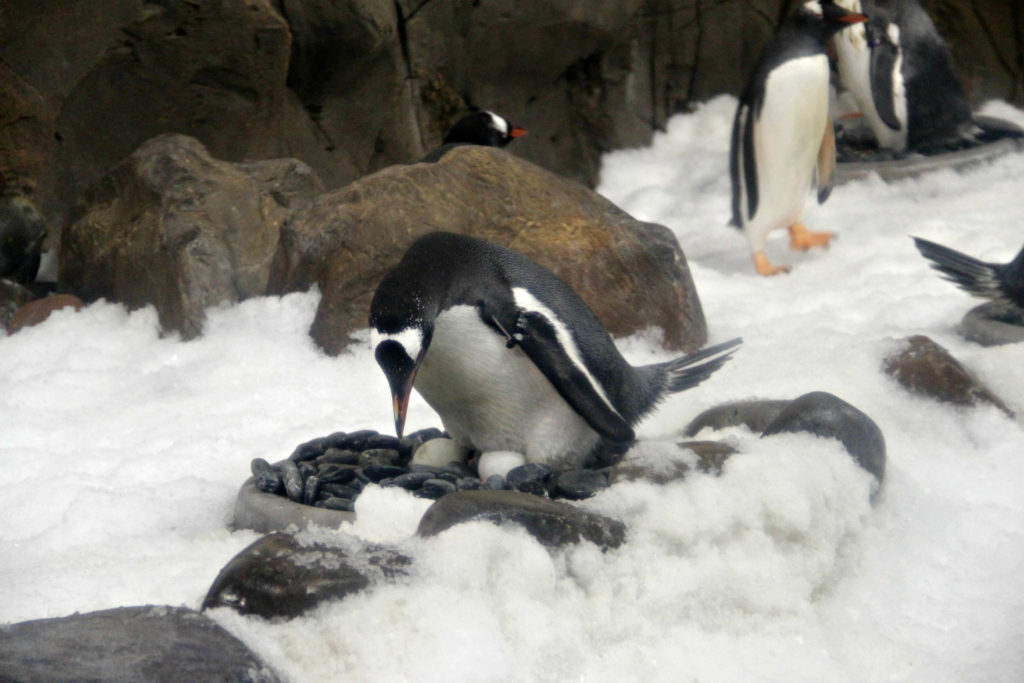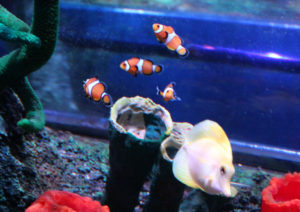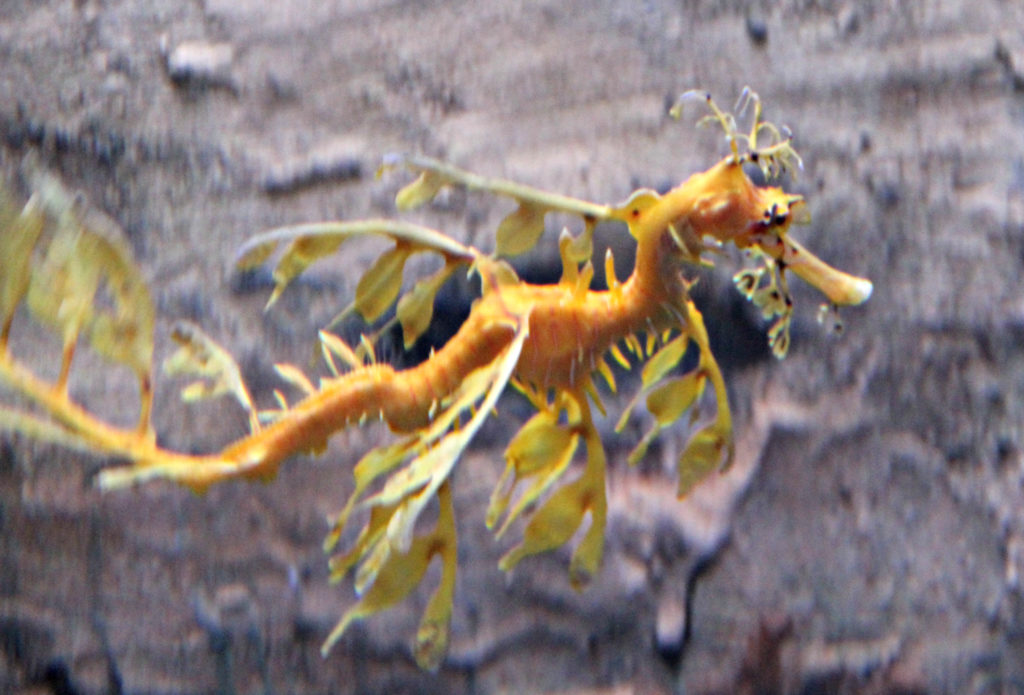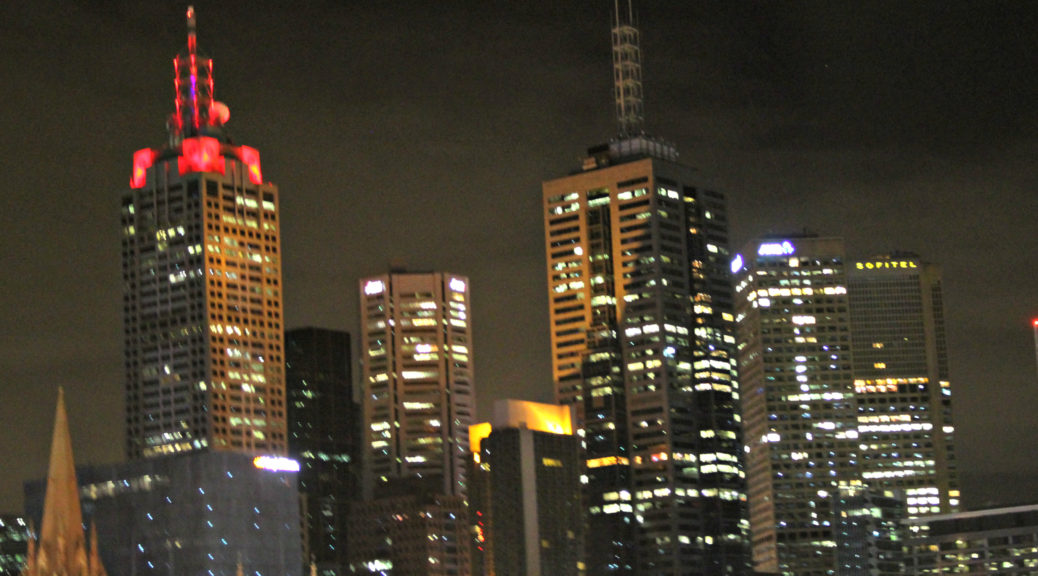
Melbourne
We began the Grand Australia and New Zealand tour in Melbourne. We stayed at the Langham Hotel on the Southbank Promenade. There are many restaurants along the Promenade and the walk along the Yarra River is beautiful. We saw several teams rowing on the Yarra. Pictured immediately below is the Southbank Footbridge which crosses the Yarra River. There are steps that took us below the bridge to a restaurant/bar called Ponyfish Island where we had lunch.
On a walking tour of Melbourne, we crossed the Southbank Footbridge and then walked to the Central Business District. One of the more beautiful and interesting sites was the Block Arcade which dates back to the late 1800’s. After a fire in 1889, it was built as a shopping arcade. It features skylights allowing for natural light, mosaic floors and stained glass windows. New fire regulations went into effect in the 1980’s. Because of the expense involved in bringing the structure up to code, it was sold to the Time Corporation, a group of companies which restores historic buildings. They spent over $15 million to bring the Block Arcade up to code and refurbish it so it met National Trust and Heritage Victoria standards. The Block Arcade got its name from “high society” individuals who walked around the block of Collins, Elizabeth, Swanston and Little Collins Streets – this was called “doing the block” and was the place to be seen. The Block Arcade has several stores, including the Hopetoun Tearooms, which was one of the original stores in the Block Arcade, dating back to 1892. The picture with the beautiful pastries is the the Hopetoun Tearooms’ display window. One of the stores, Australian by Design, has beautiful pieces made in Australia – we purchased some of our souvenirs and gifts here and had them shipped home.
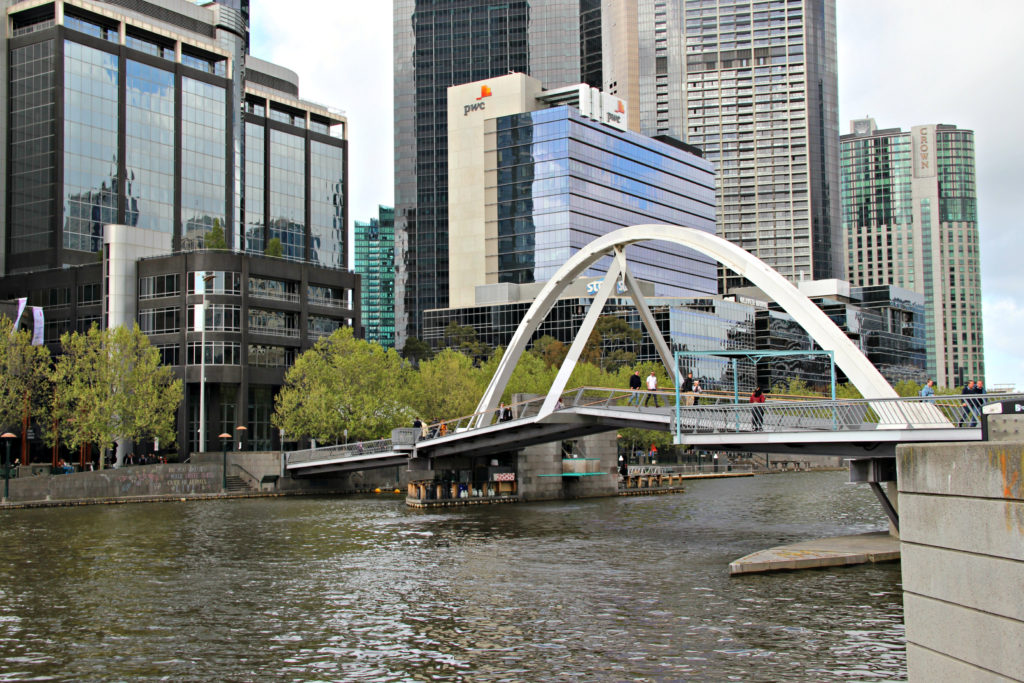
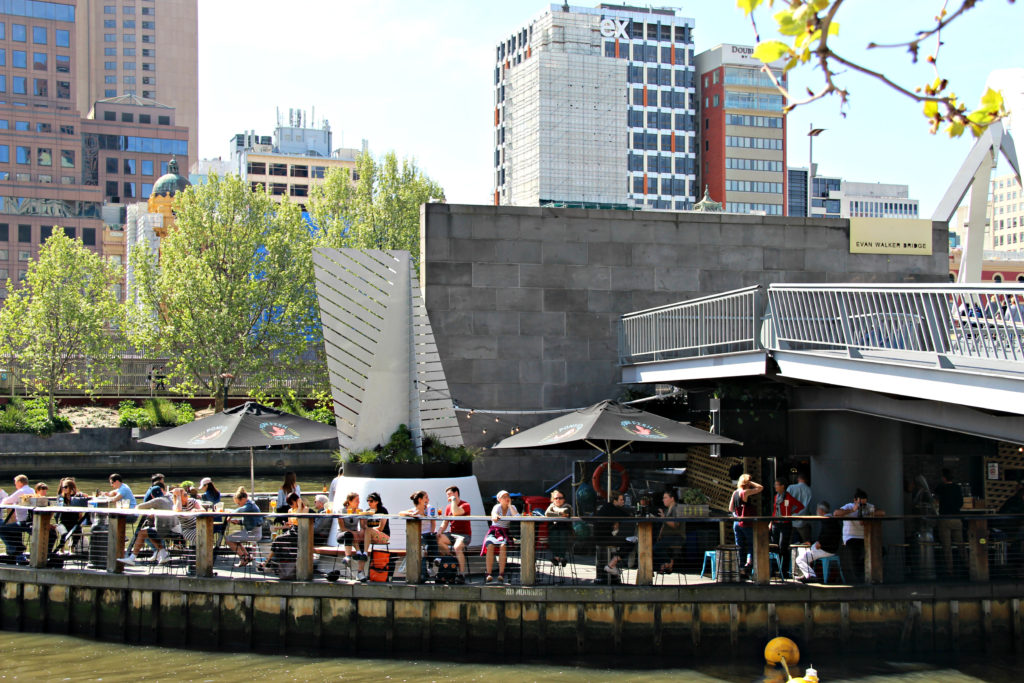
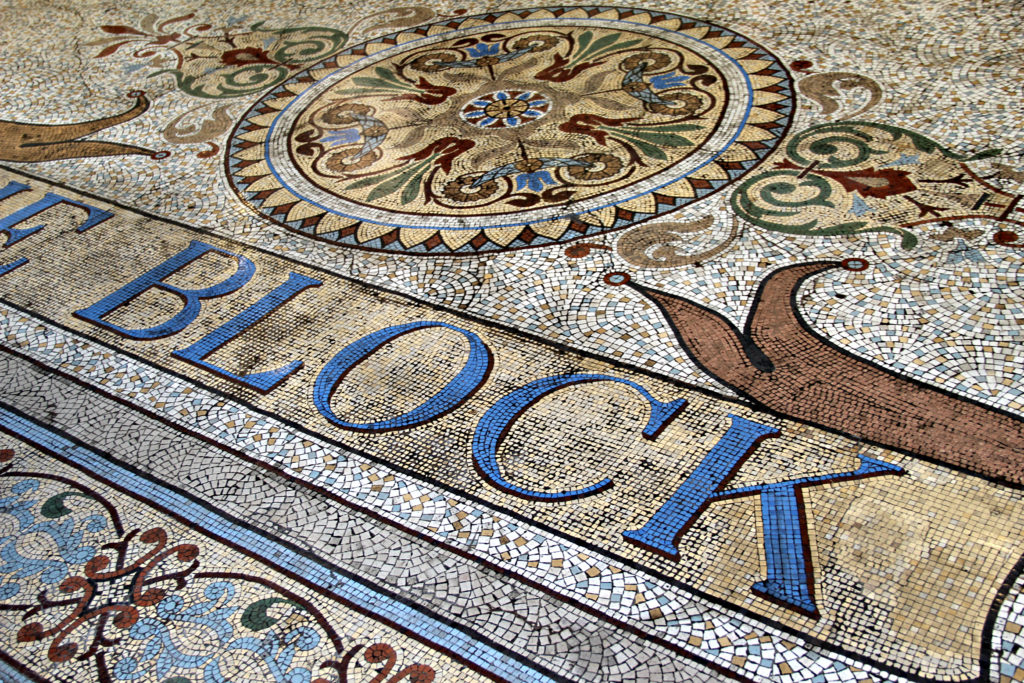

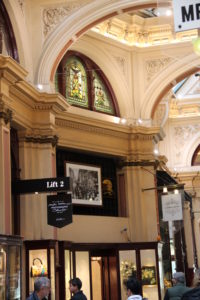

After our walking tour, we boarded a bus to see other parts of Melbourne. The houses pictured below are called terraced houses which are similar to town houses in the United States. These have cast iron on their balconies called “filigree.” They often depict Australian flowers. We also drove by the Eight Hour Day Monument. This commemorates labor’s efforts for work-life balance: eight hours of work, eight hours of rest, and eight hours of recreation. This was a workers’ right achieved in 1856.
We next drove to the Shrine of Remembrance which was built in 1934 to honor Australians who served in the armed forces. We were able to observe a ceremony where artificial light passed over the words, “Greater Love Hath No Man.” It replicates sunlight which comes in naturally through an opening in the structure on November 11th at 11AM and passes over these same words. After observing the ceremony, we stepped out on a balcony where we saw a beautiful view of Melbourne.
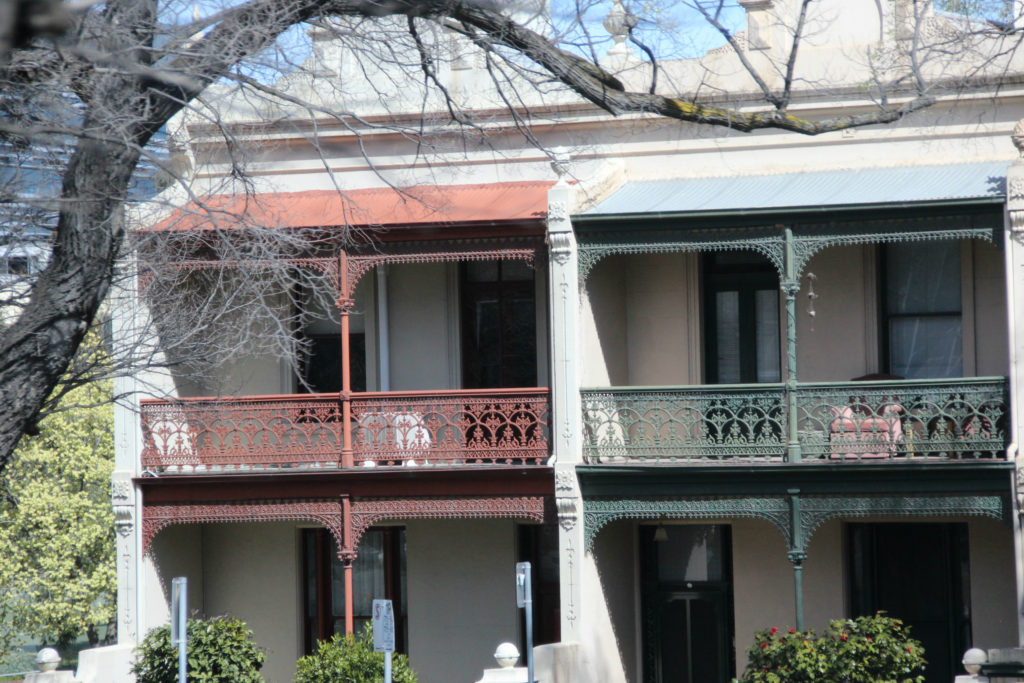

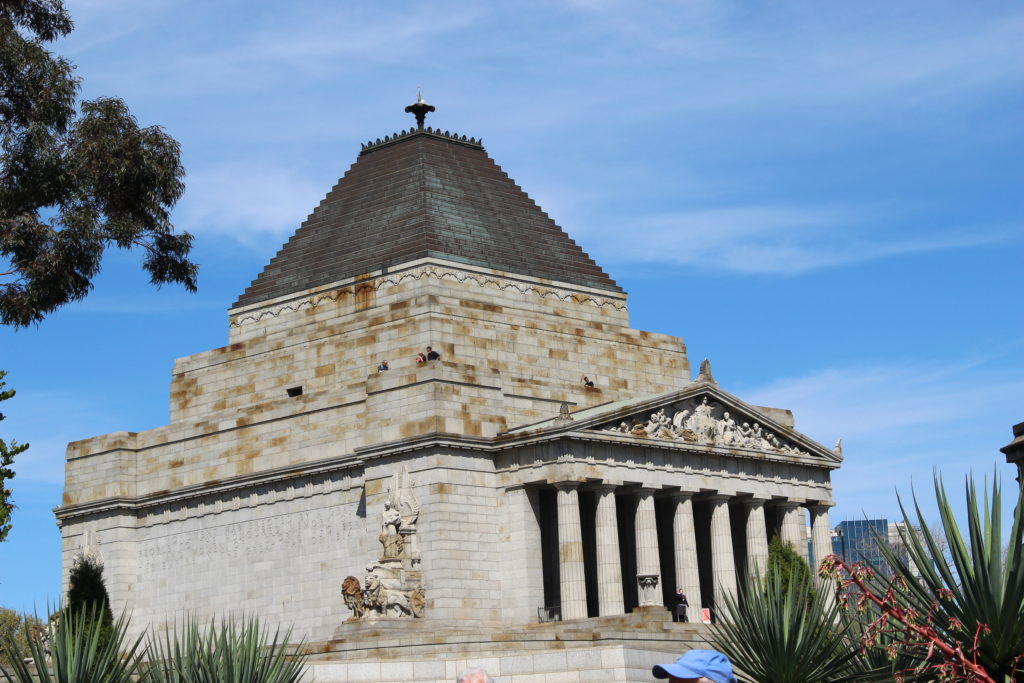
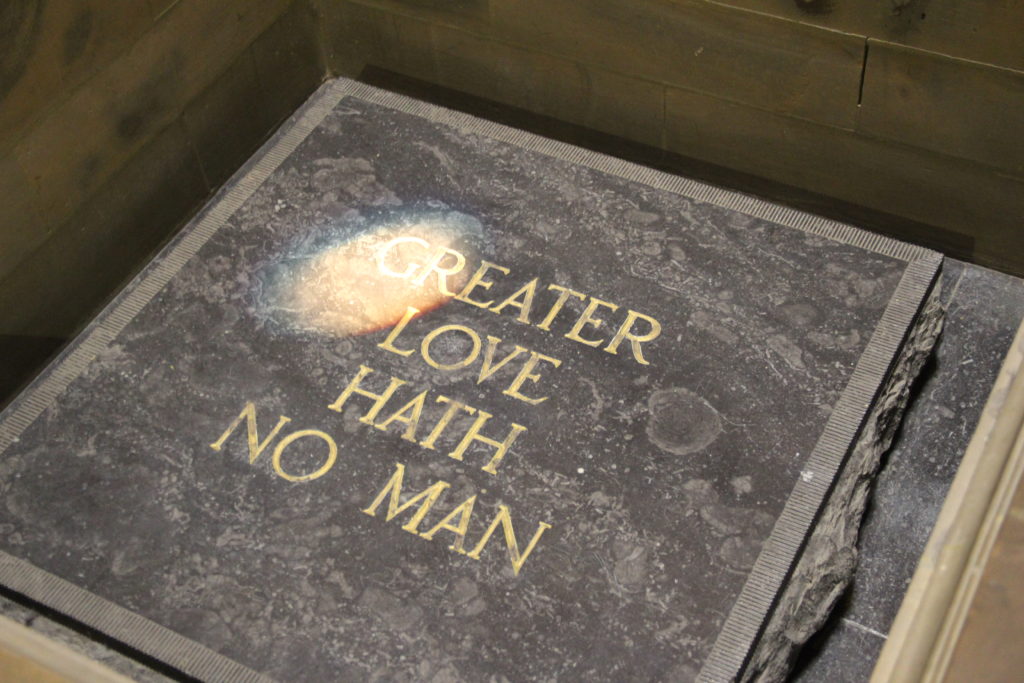

We also visited the Melbourne Botanic Gardens where we saw beautiful flowers and many trees, several native to Australia. One of these trees, a Moreton Bay Fig, is pictured below. The tree has a shallow root system so has “buttress roots” which help to support it. It is an evergreen, but instead of the needles we would expect to see, it has broad leaves. The next picture is a Cockscomb Coral Tree. It is an ornamental tree and, in the proper season, has bright red flowers that attract birds. Finally there is a picture of a billabong. You may remember that older rivers meander. A billabong forms when a pond or lake is cut off from the rest of a meandering river. It is also called an oxbow lake because of its U-shape.
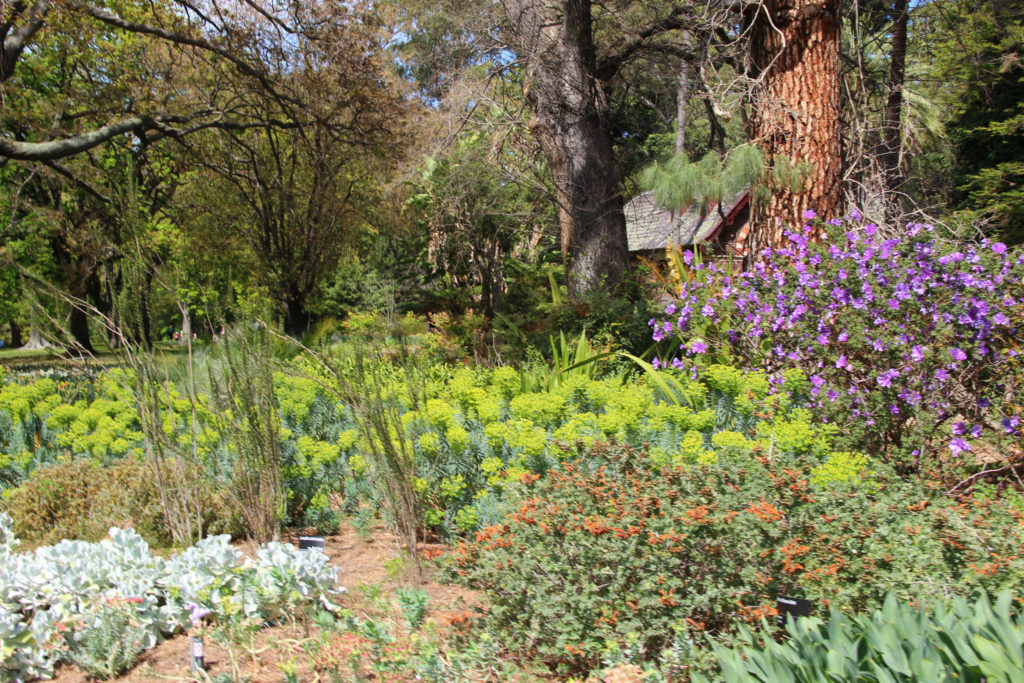
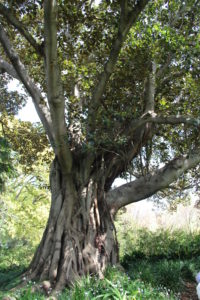


In some of our free time, we went to the Eureka Skydeck. The Skydeck has the fastest elevator in the Southern Hemisphere which we took to the 88th floor – it was just a 38-second ride. The Eureka Skydeck is the tallest building in the picture below (actually directly behind our hotel in the picture). While most of the 88th floor is enclosed, there was also a terrace we could step out on to see the view.
The other pictures are of some of the views we saw from the Skydeck. In addition to one of the city, there is a picture of the Melbourne Sports and Entertainment District. The large stadium is the Melbourne Cricket Ground (MCG) where cricket and Australian Rules Football are played. The Rod Laver Arena, famous as the home of the Australian Tennis Open, is in front of the MCG near the Yarra River. AMMI Park, the building with the geodesic dome roof, can host rugby and soccer. The other major building (between the MCG and AMMI Park) is the Hisense Arena. It has a velodrome for cycling and can also accommodate basketball, netball, tennis, gymnastics and ice hockey.
Moving on to the last picture, you will see the West Gate Bridge. It is the third longest bridge in Australia and one of the highest. The West Gate Bridge spans the Yarra River, connecting Melbourne’s central business district to some of its western suburbs.

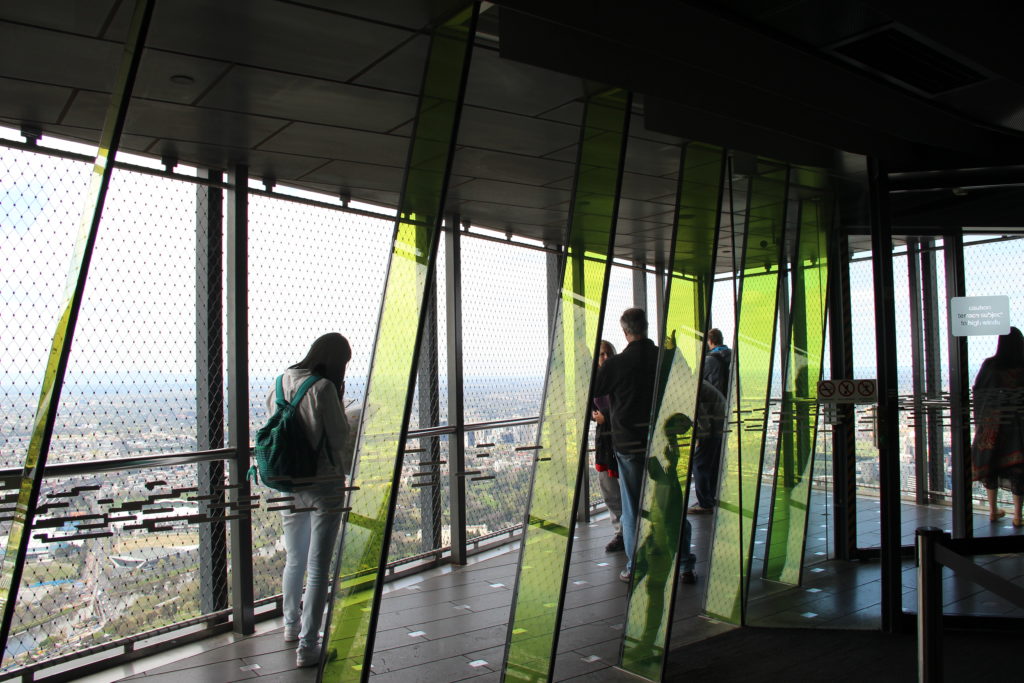
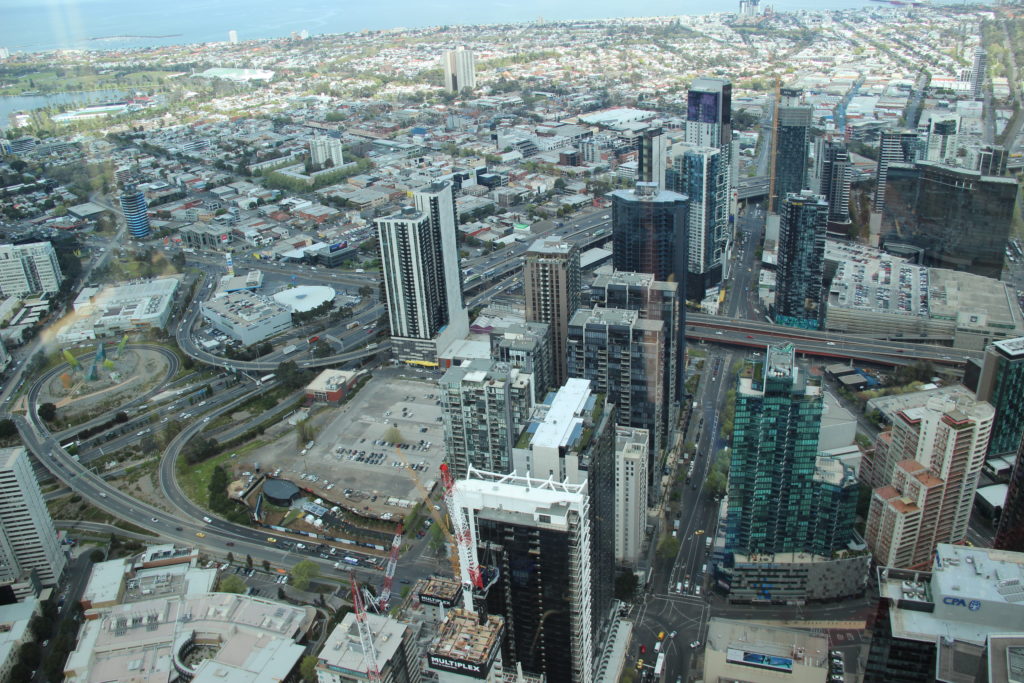


We also visited St. Paul’s Cathedral. The first picture is an aerial one of the Cathedral, taken from the Eureka Skydeck. St. Paul’s Cathedral was built at the location of the first Christian church service in Melbourne. The exterior of the church is made of sandstone. The interior of the cathedral has banded masonry, a wooden ceiling and a mosaic floor. Parts of the altar are made of marble and alabaster. The organ dates back to 1891 but has undergone refurbishing through the years. The organ’s pipes have stenciled paintings which a docent told us was common in England.


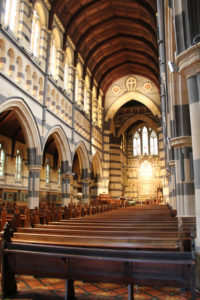

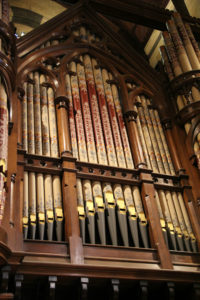
We also visited the Sea Life Melbourne Aquarium. They have a variety of exhibits, and we chose just a few. The first exhibit we visited was the penguins – they are a lot of fun, and were being fed while we were there. Males take responsibility for the care of the eggs – and we saw one watching over the two in his care. We also visited the tropical reef exhibit. Nemo was a popular fish with the children and we took pictures to share with our granddaughters. In another interesting exhibit, Seahorses and Relatives, we saw “leafy sea dragons.” Their leafy appearance provides great protection and camouflage. All of the places we visited on our own – the Eureka Skydeck, St. Paul’s Cathedral and the Sea Life Aquarium – were within easy walking distance of the Southbank Promenade.
